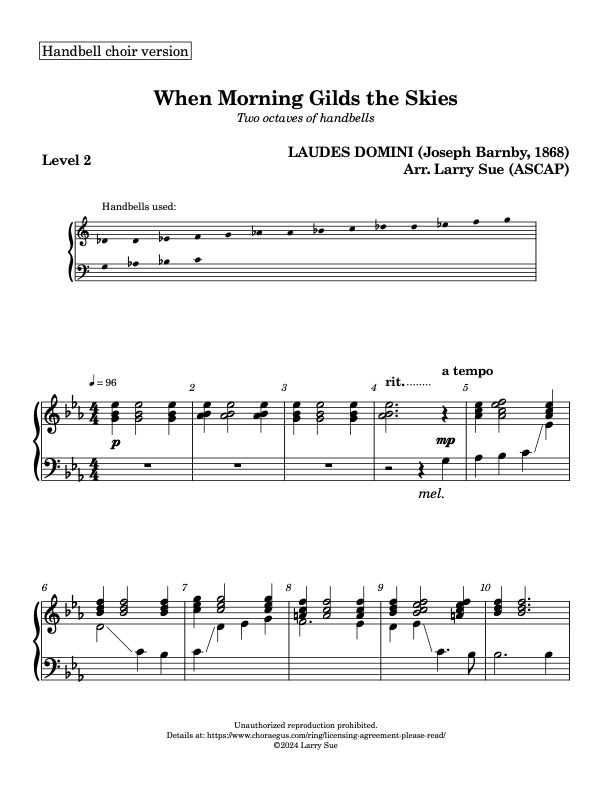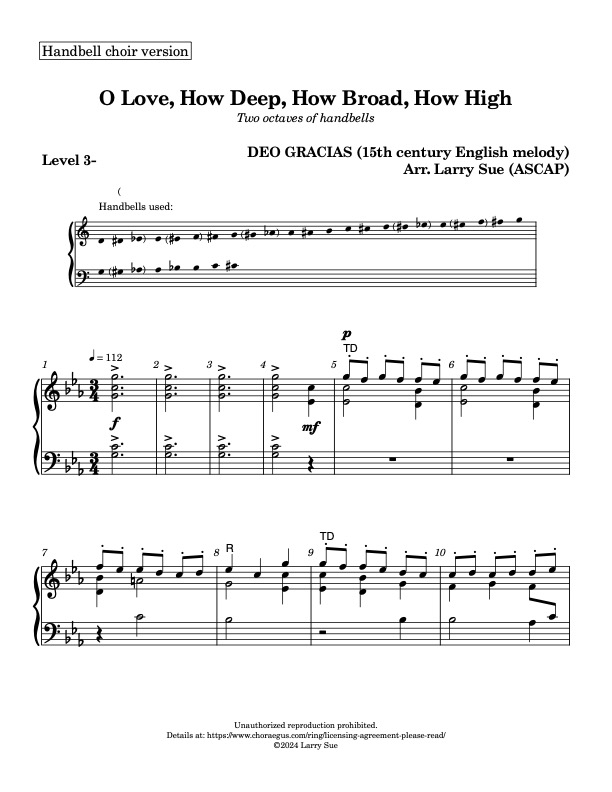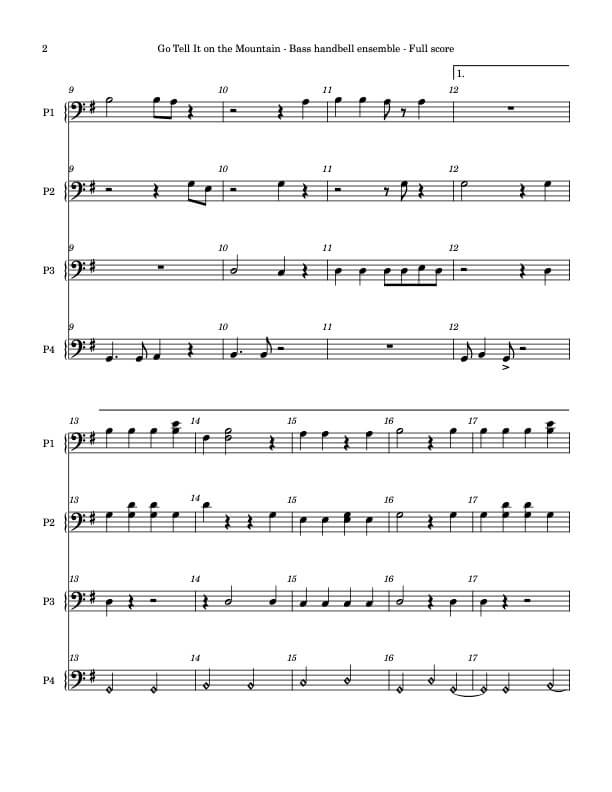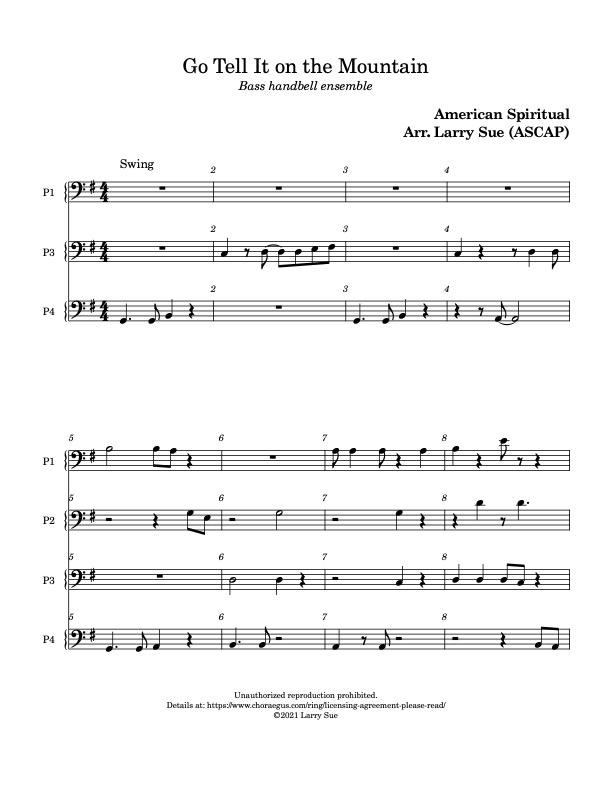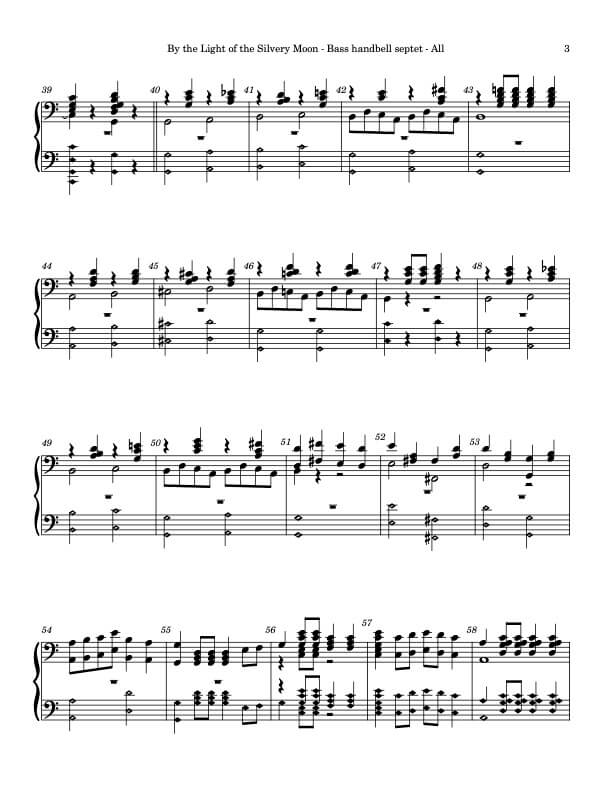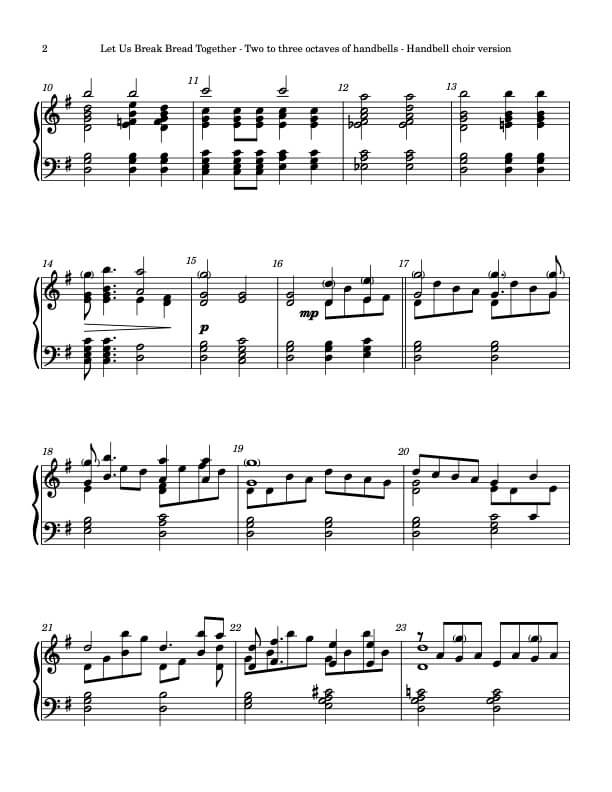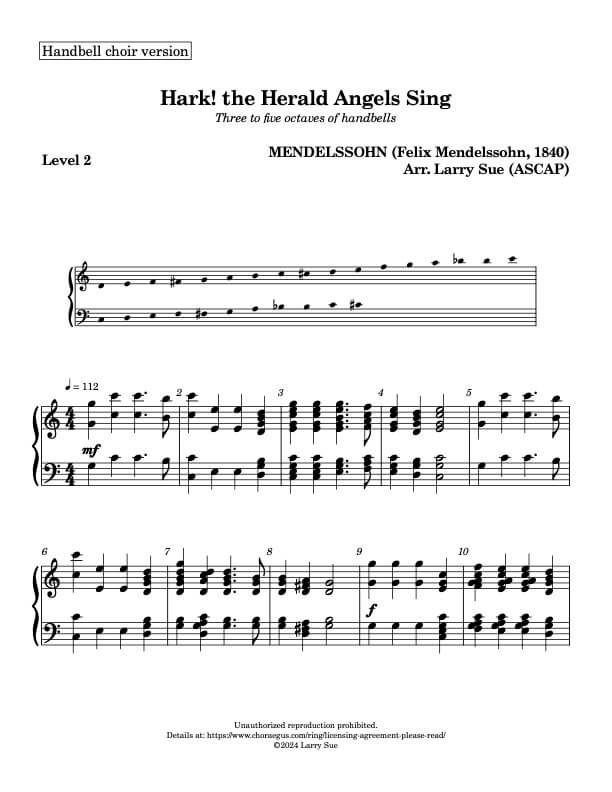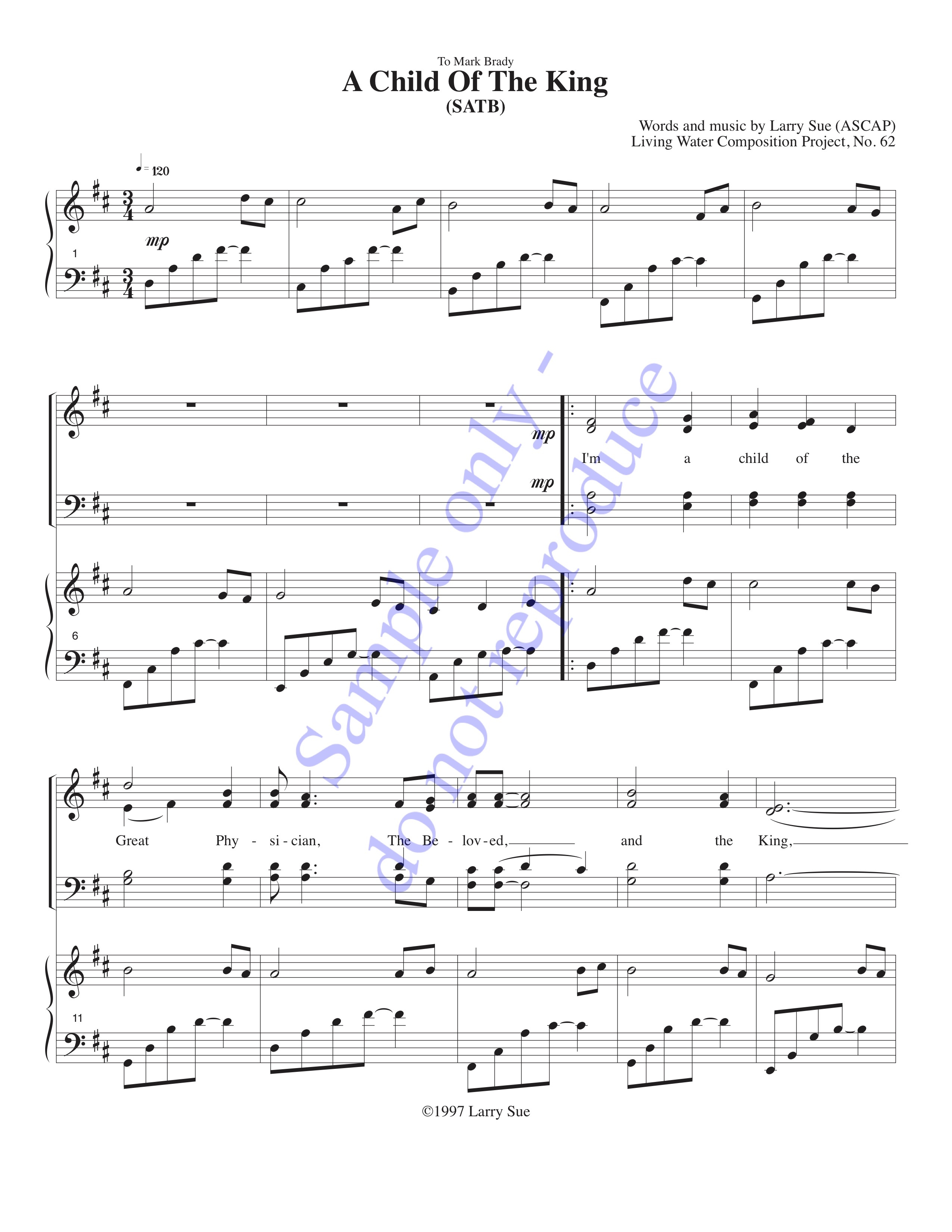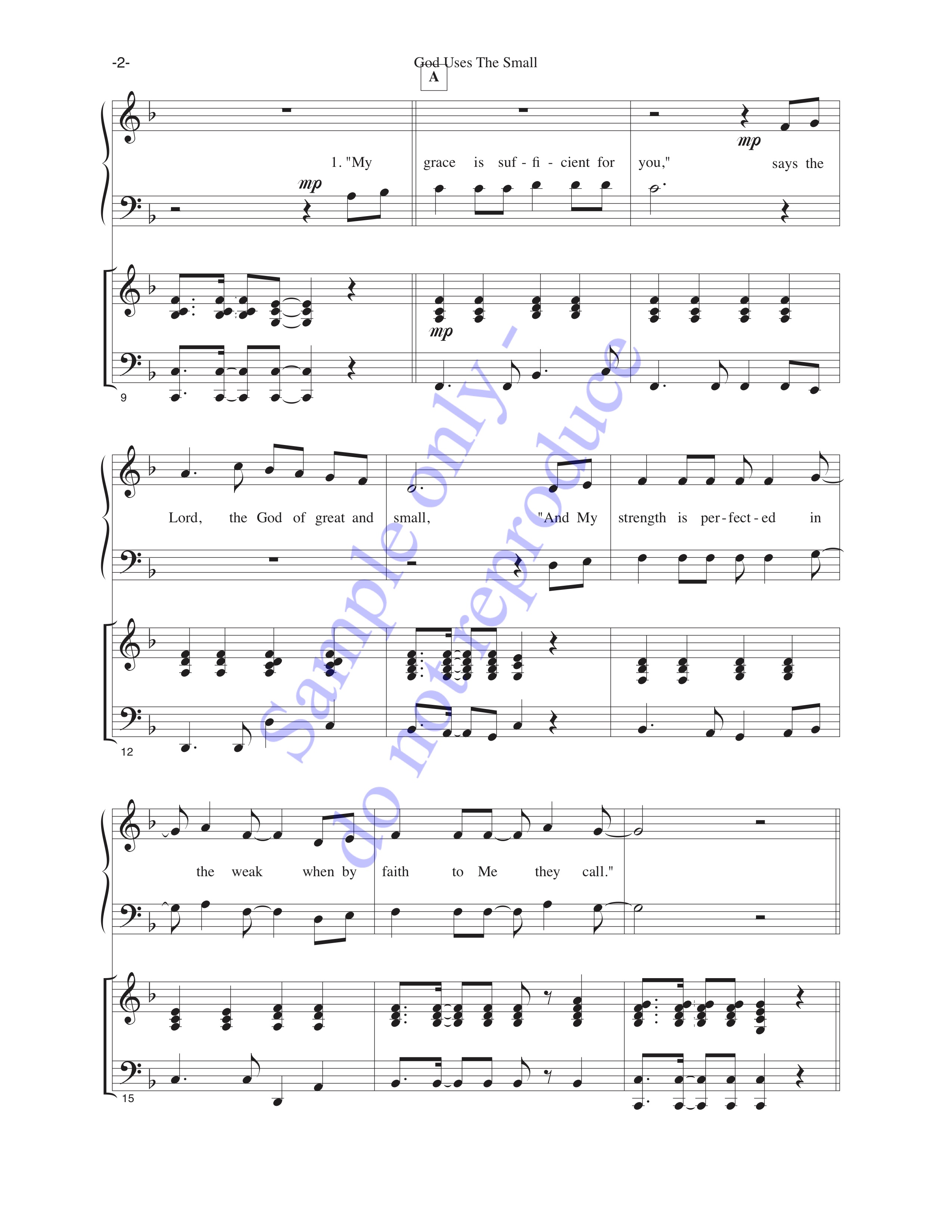We started exploring jigs and hornpipes as a possibility for new eight-bell music. Amazingly, we found them to be very well-adapted to our instrument, and have since then made quite a few arrangements. We’ve enjoyed playing them, having found the following:
- They’re fast. Jigs and hornpipes are happy, lively music, and are made for rapid dance steps. They usually are in triple meter (6/8 or 9/8 most of the time – and there’s some interesting history there as well) which means it’s not uncommon for them to zip along at 350-400 notes per minute.
- They have lots of repeated notes. While this isn’t a problem for someone playing a fiddle or a bodhran, it is a technical challenge with a handbell – and it’s even more so if you’re playing four-in-hand.
- If you’re playing four-in-hand, be ready to play a lot of “flips”. We use the term “flip” when two consecutive, different notes are played by the same hand. So if you’re playing the four-in-hand pairs G/B and C\A, you’re playing a flip if the score indicates G-B, B-G, A-C, or C-A. This little technical challenge means that you have to coordinate the two bells in one hand so that they ring one after the other at the right time. The above-mentioned 350 notes per minute means the time between notes is about a fifth of a second.
- More technical challenge: Jigs also tend to have flips and repeated notes in quick succession…
- But they’re great fun once you get the hang of them!
Onward: We also have some other pieces in our “dances” category. Check them out, because they also are fun, though perhaps a bit easier than jigs!
Anyway, start slowly, and work at your own pace. We’ve found these dances to be great for improving our four-in-hand skills, and we’re sure you will too!


